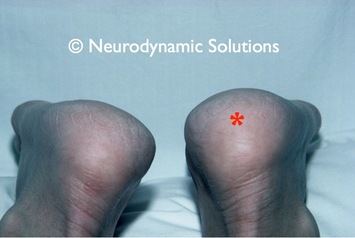It was pain diagnosed as Plantar Fasciitis that sent me on a path that eventually led me to study massage, and my fascination with painscience and neuroscience
In my case, I may have had inflamed plantar fascia--but I definitely had a neurodynamic disorder/nerve entrapment, which was relieved by a medical massage therapist (my hero!) and self-massage and mobilization.
Some key points from this article: https://www.neurodynamicsolutions.com/neurodynamic-aspect-to-heel-pain.html
>However in relation to the more physical and benign causes, there are some key facts about neurodynamic problems at the ankle that are important when considering foot pain:
- clearly not all foot/heel pain comes from nerves, but some does.
- nerve abnormality is an underestimated cause of foot pain. Research shows that patients with foot pain can show reduced nerve conduction in various nerves in the ankle/foot region (Schon et al 1993)).
- nerve problems can masquerade as plantar fasciitis and other local causes of heel pain.
- there should be a distinction between 'nerve entrapment' and 'neurodynamic disorders' around the ankle and foot. Nerve entrapment is frank trapping of the nerve which is mostly likely a compressive lesion (eg. tarsal tunnel syndrome). But, whilst the term 'neurodynamic disorders' includes 'nerve entrapment', the term should be used to denote other types of mechanical and physiological problems in nerve function at this location, eg. nerve irritation and inflammation due to excessive use of the ankle combined with excessive pronation. This may produce a neurodynamic disorder (probably neuritis) caused by mechanical irritation.
- tissue changes in the foot/heel eg. swelling and tenderness DO NOT EXCLUDE a neurodynamic cause. This is because the nerves can produce inflammatory changes in the tissues they innervate by a mechanism called 'neurogenic inflammation'.<
>Nerves that are exposed to excessive or repeated mechanical force may become hypersensitive and produce impulses in both afferent and efferent directions. Afferent impulses may cause pain and efferent ones may cause inflammation in the tissues innervated by the sensitised nerve (neurogenic inflammation).<

No comments:
Post a Comment